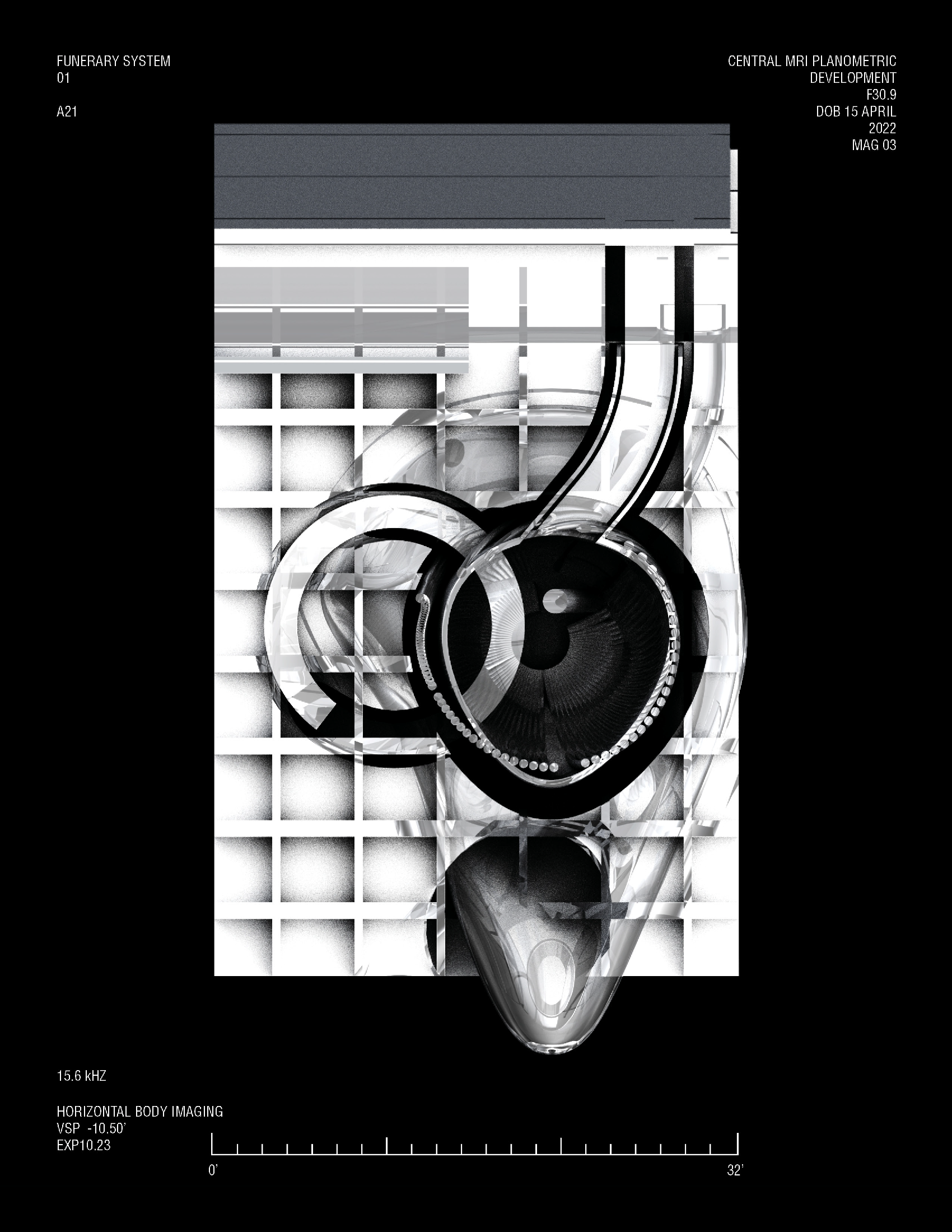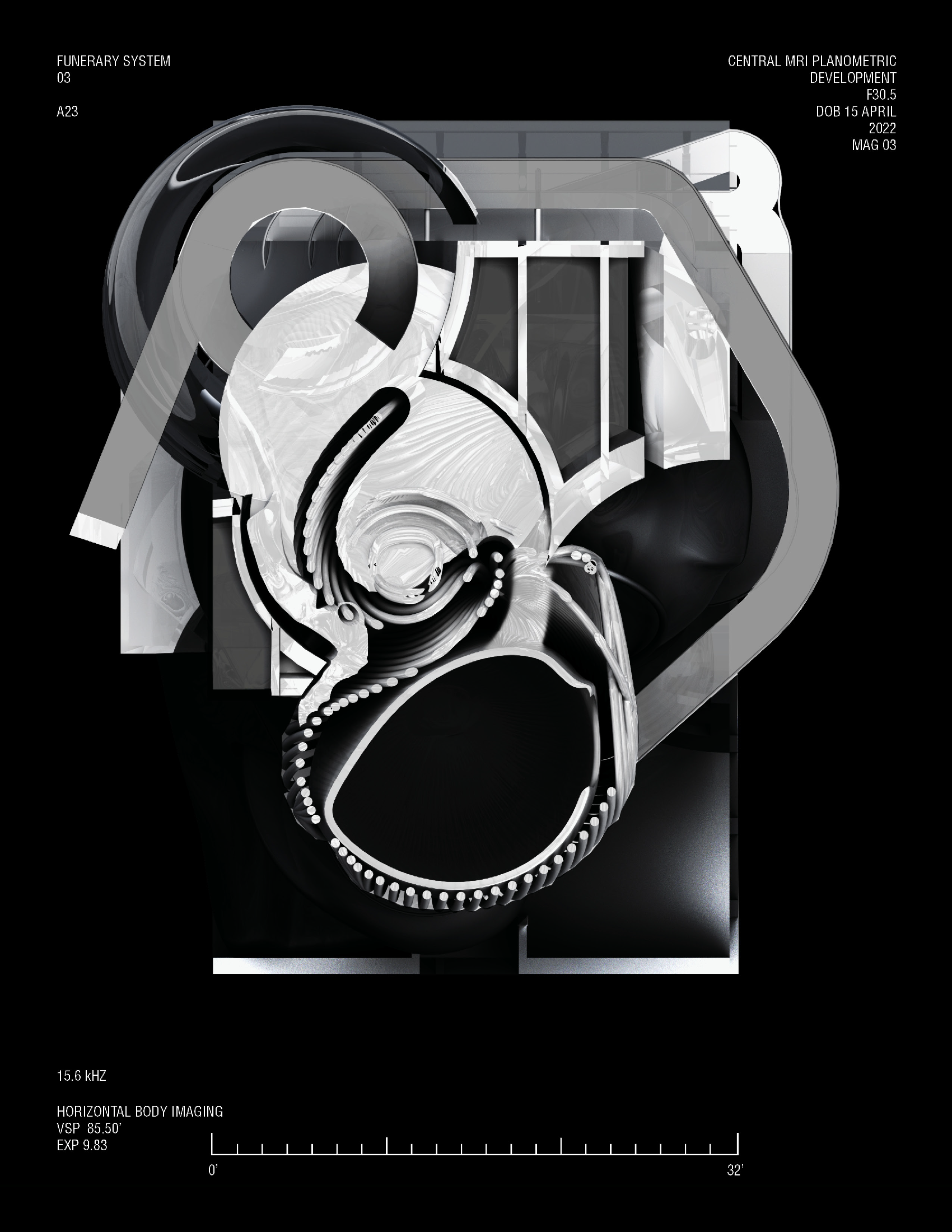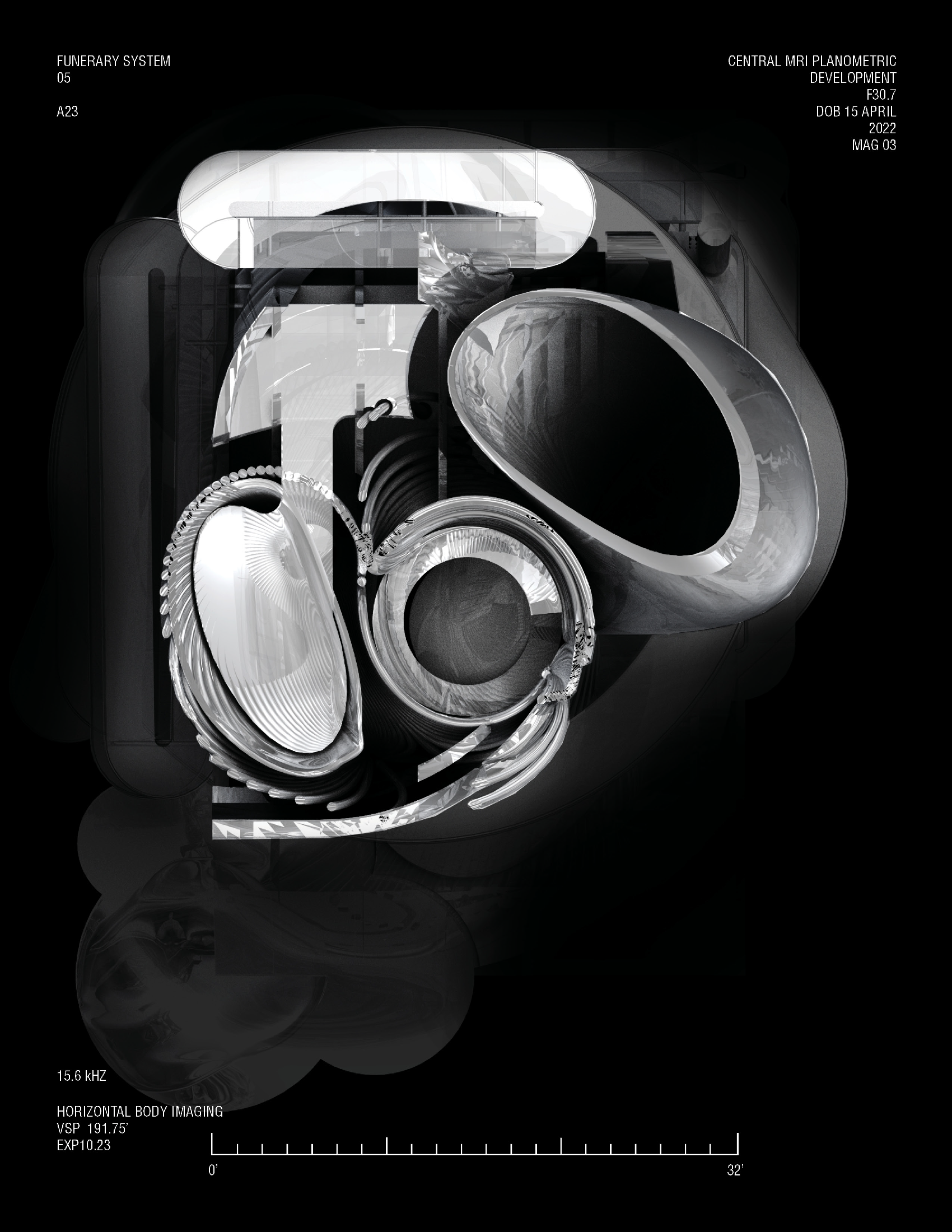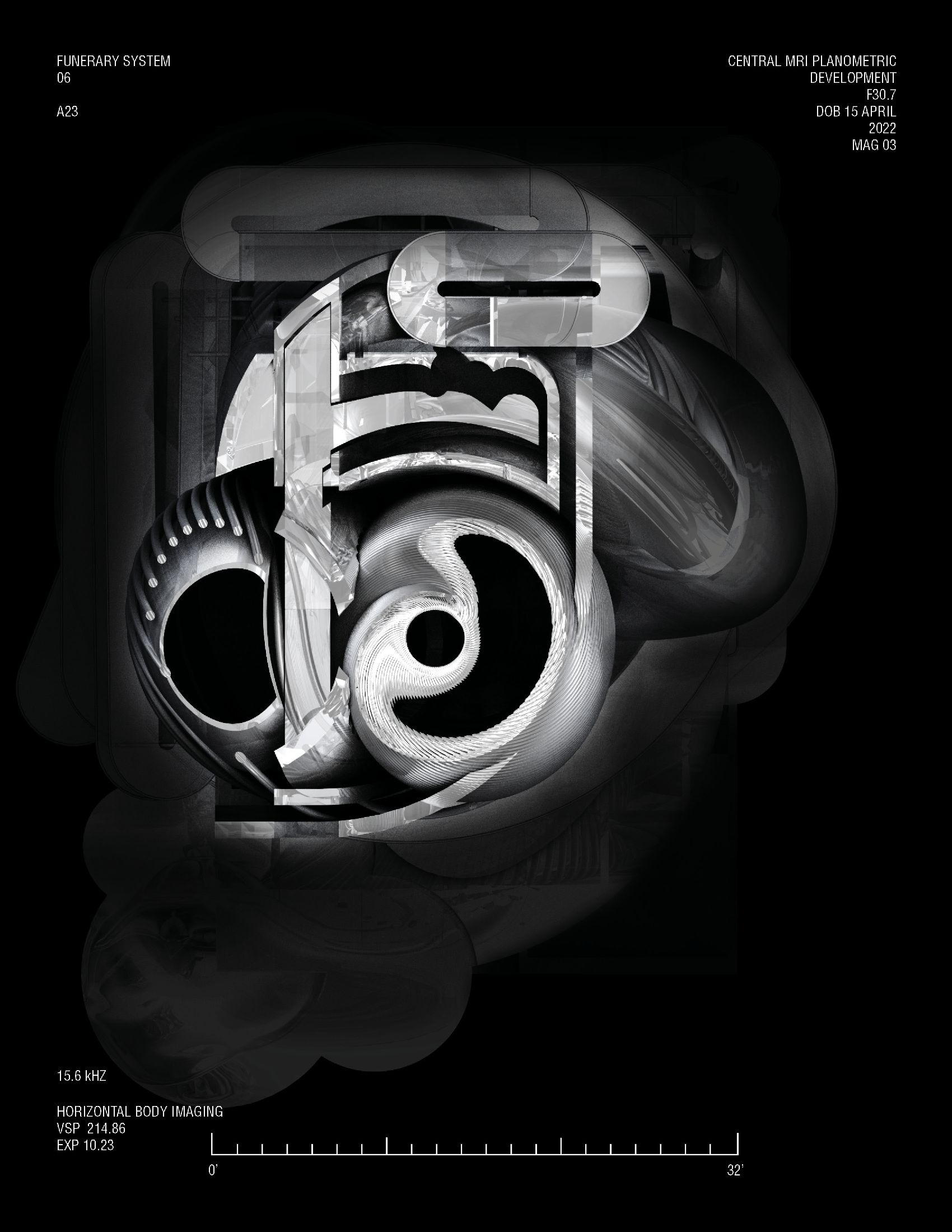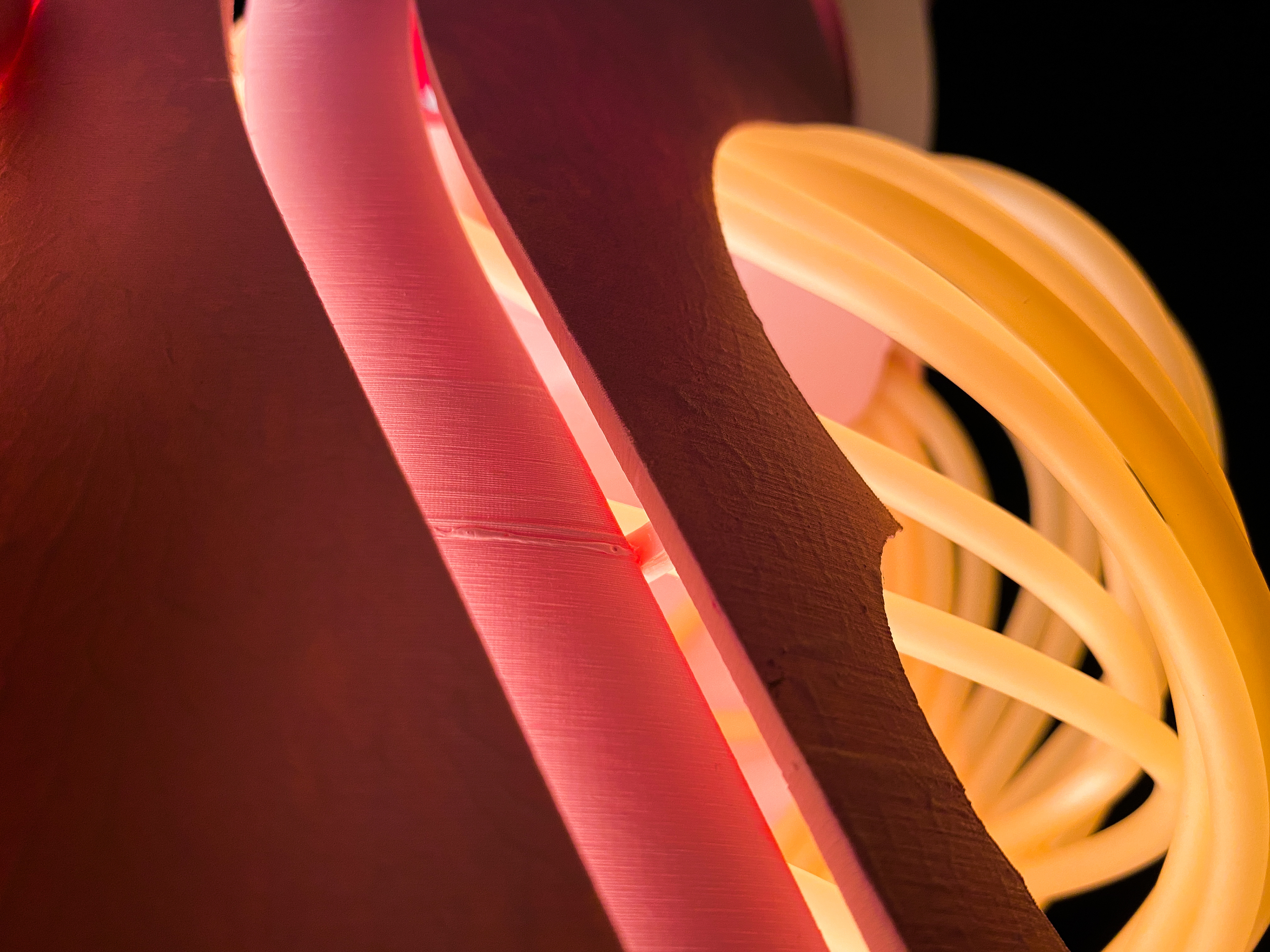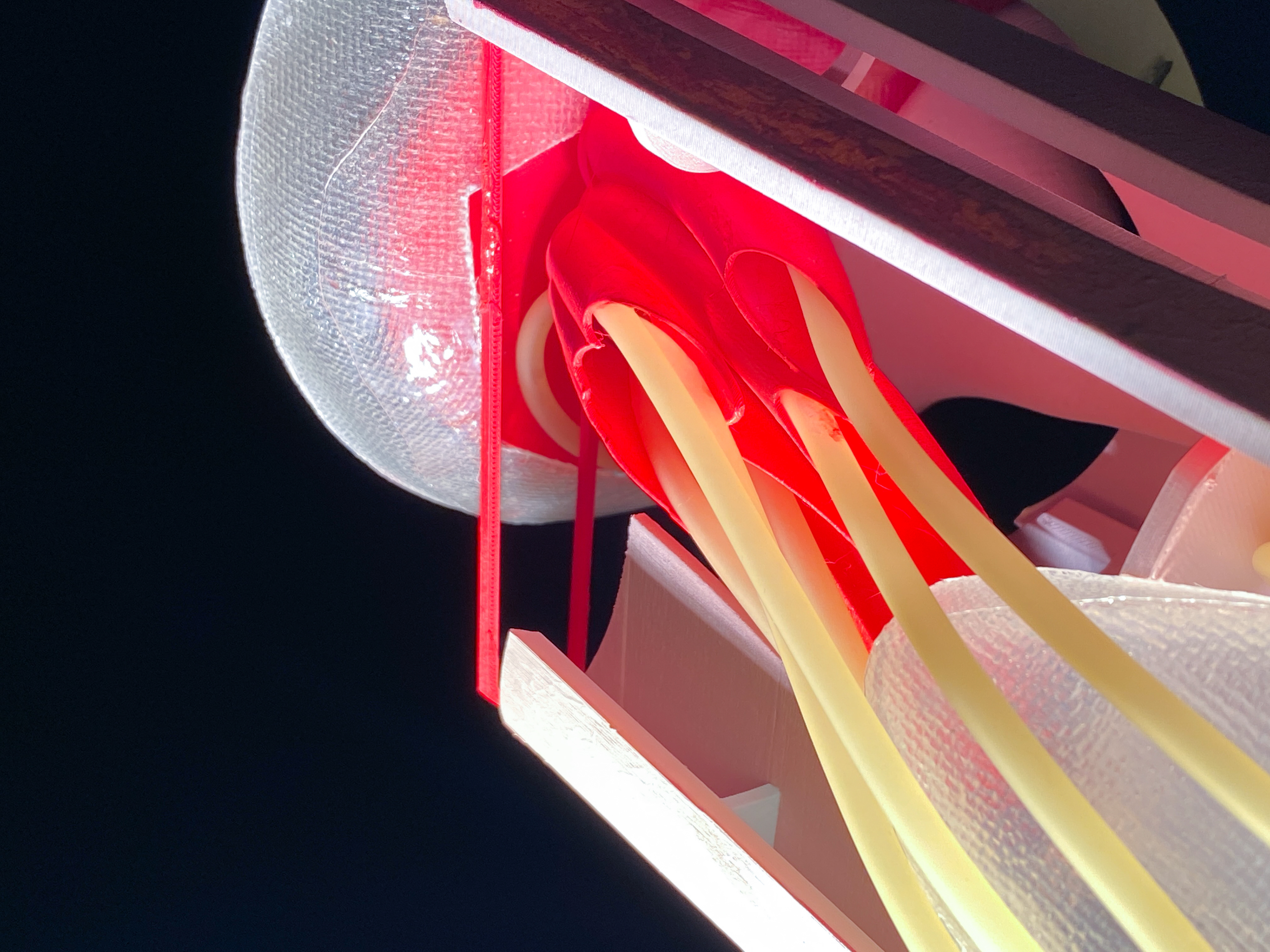COLD, BRIGHT, DAMP, AND STERILE
COLD, BRIGHT, DAMP AND STERILE: A BUILDING AS A BODY FOR THE BODY
We interact with the environment through our bodies, using our senses, to analyze our surroundings. This continuous differentiation between body and other has profound impacts on architecture and the built environment. The discipline of architecture uses the metaphor of building as a body. Thus, buildings become representations of a body, giving them familiarity and authority. In this thesis, I will outline four instances of the building as a body metaphor and propose a new funerary architecture.
In contemporary discourse the building as a body metaphor reacts to the existential threats of climate change. We task buildings
with being self-sufficient, breathing, and self-protecting organisms that respond to their surroundings producing environments for human inhabitation. Driven by performance, buildings adopt functions of the body. By imitating the functions of the body, architecture seeks to blur the line between natural and artificial creating sustainable atmospheres for people and the world around it. Architecture becomes an artificial body living* and coexisting within a natural world.
Buildings as artificial bodies, have a unique potential to serve the living but also the dead. With a growing disassociation with death, we may want to consider an intimacy, and a medical understanding of death as a healthier and more productive way to cope with loss of life. This necessitates a new architectural typology, a funerary architecture that improves our relationship with death by re-associating us with the body. I propose utilizing the building as a body metaphor in its current state and historical states to develop an emotive and ecological architecture, providing a space for a healthier and intimate relationship with death.
Thus, funerary architecture becomes a building as a body for the body, both alive and dead.
